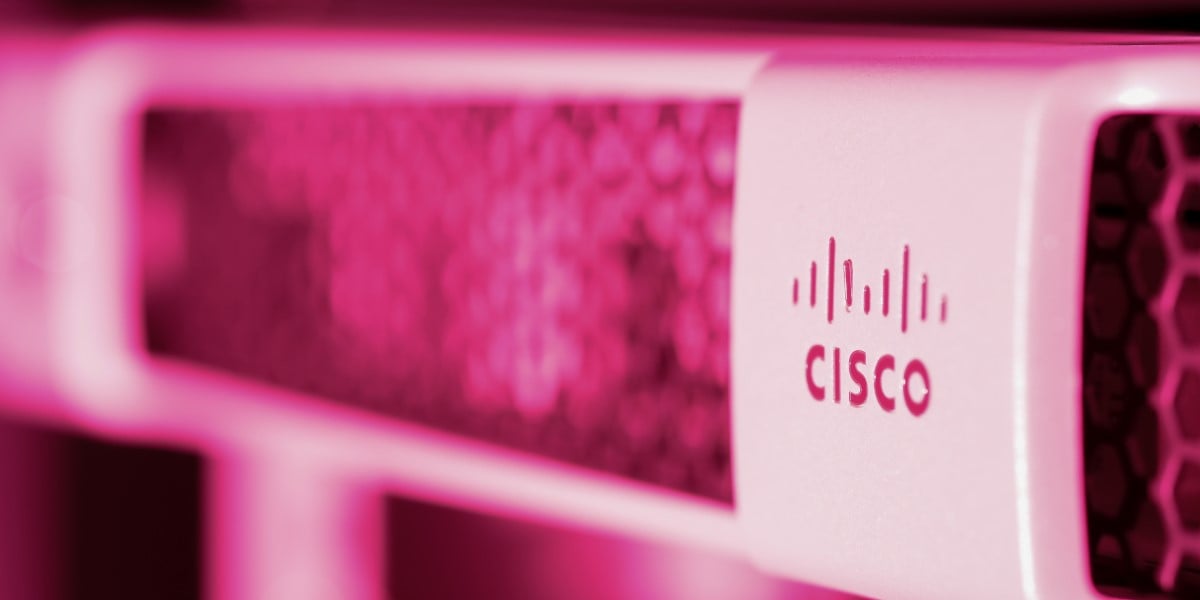Cisco Dumps Its Hyperflex Hyperconverged Infrastructure

Cisco has discontinued its HyperFlex hyperconverged infrastructure products.
The IT goliath told The Register today "evolving customer needs and market dynamics" made it rethink its plans for the equipment, which combined a hybrid cloud software stack and Cisco's own Unified Computing System, or UCS, servers to offer a rival to the likes of VMware and Dell's vXRail, or Nutanix and HPE's HCI offerings (HCI being short for hyperconverged infrastructure).
Hyperscalers looming over the market are another challenge. Oracle, for one, just shrank its on-premises cloud into an offering that competes with larger hyperconverged rigs.
Cisco has not offered a detailed explanation of its decision to pull the plug on HyperFlex, telling us it was "timed to best support our customers, partners, and employees." A Cisco spokesperson assured The Register it "remains committed to simplifying hybrid multi-cloud operations."
But Nutanix, not Cisco, gets the job of making that happen. The two recently announced a partnership to run Nutanix's software stack on Cisco hardware and – critically – have Cisco salespeople sell the resulting rigs and score commissions, even for the Nutanix code they shift.
Cisco has promised five years of support and service for HyperFlex customers.
That offer is complicated, though, for customers who run VMware's ESXi hypervisor with HyperFlex. Cisco will not certify future versions of ESXi to run on its hardware, leaving VMware customers to either persist with ESXi 8.0 once it exits support, or run unsupported code.
Another choice is migrating away from HyperFlex entirely – a scenario for which Cisco has helpfully published a white paper. One option is just to scrub HyperFlex and use the boxes it runs on as vanilla UCS servers.
Users committed to the platform have time to prepare. Cisco will accept orders for HyperFlex hardware and software until March 12, 2024, and will try to ship it all before June 10 of the same year.
- Cisco close to clearing the backlog of hardware orders a certain virus caused
- Cloud is here to stay, but customers are starting to question the cost
- Toyota servers ran out of storage, crashed production at 14 plants in Japan
- The future of the cloud sure looks like it'll be paved in even more custom silicon
But pain still lies ahead: Cisco's FAQ on the discontinuation explains that HyperFlex licenses won't be usable as credit for Nutanix products. The two suppliers "are working on a number of migration offers," though, with the vendors naturally happy to chat about those.
Tired of being an "other"
In The Reg's view, Cisco is likely binning HyperFlex because it just didn't sell that much of it.
IDC data from late 2022, cited by VMware, lists HPE as the third-biggest player with 7.3 percent market share, well behind VMware's 41 percent market share and Nutanix's 25 percent slice. That leaves Cisco somewhere in the "Other" category's 26.8 percent of the market.
Cisco has been content for its UCS servers to occupy a niche – it trumpeted strength in the blade server world without ever troubling the likes of Dell, HPE, or Lenovo. HyperFlex seemingly did too little to change that, and gave Cisco the burden of maintaining a management software stack at a time it's moving most of its tools to the cloud and subscription models.
Switchzilla also has little tolerance for business units that don't scale to a certain size or offer growth prospects. With hyperscale cloud a threat to all server makers, and hybrid cloud reducing the need for piles and piles of on-prem boxes, it's not hard to see why Cisco has decided HyperFlex's time is done.
Smaller and/or open source HCI players have proven they can succeed long term – the likes of Scale Computing have largely gone under the radar for years, while Reg readers often sing the praises of Proxmox VE. We also hear that China has a vigorous crop of HCI vendors – most of which base their products on open source code – and that converged compute and storage is appreciated by the Middle Kingdom's mid-market companies.
Cisco, however, clearly won't be chasing that market.
Whether it continues to bother with servers at all will likely become the subject of further speculation. The Register also wonders what the decision to ditch HyperFlex means for other niche HCI offerings from big vendors, such as IBM's SpectrumFusion. ®
From Chip War To Cloud War: The Next Frontier In Global Tech Competition
The global chip war, characterized by intense competition among nations and corporations for supremacy in semiconductor ... Read more
The High Stakes Of Tech Regulation: Security Risks And Market Dynamics
The influence of tech giants in the global economy continues to grow, raising crucial questions about how to balance sec... Read more
The Tyranny Of Instagram Interiors: Why It's Time To Break Free From Algorithm-Driven Aesthetics
Instagram has become a dominant force in shaping interior design trends, offering a seemingly endless stream of inspirat... Read more
The Data Crunch In AI: Strategies For Sustainability
Exploring solutions to the imminent exhaustion of internet data for AI training.As the artificial intelligence (AI) indu... Read more
Google Abandons Four-Year Effort To Remove Cookies From Chrome Browser
After four years of dedicated effort, Google has decided to abandon its plan to remove third-party cookies from its Chro... Read more
LinkedIn Embraces AI And Gamification To Drive User Engagement And Revenue
In an effort to tackle slowing revenue growth and enhance user engagement, LinkedIn is turning to artificial intelligenc... Read more

